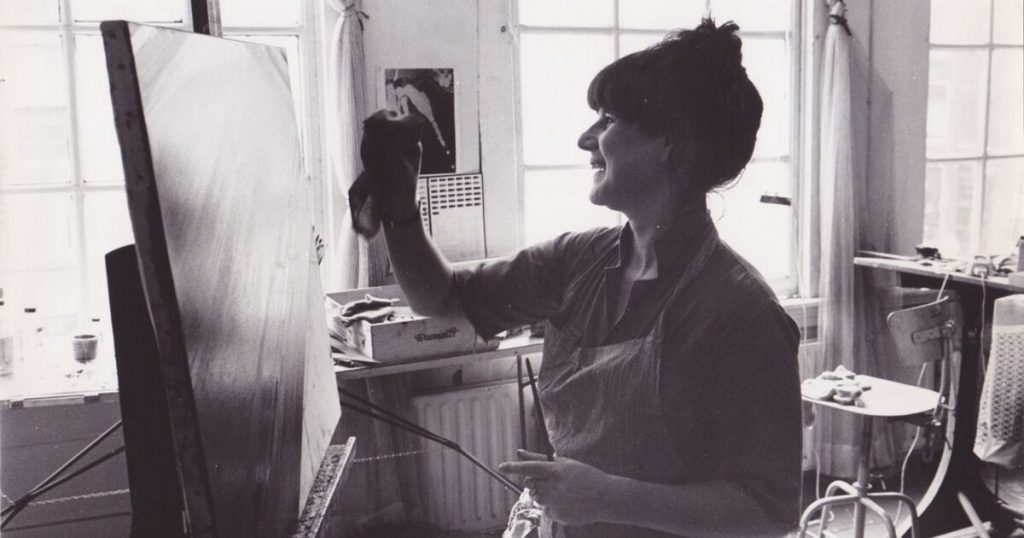Dutch artist Jacqueline de Jong, known for her role in the radical Situationist International movement and her contributions to avant-garde figuration, passed away on June 29th at 85. Her death was confirmed by her New York gallery, Ortuzar Projects, and her Paris gallery, Galerie Allen, which noted that she died among family after a short illness.
Born in Hengelo, Holland, in 1939 to a Jewish family, de Jong had an upbringing marked by the trauma of World War II. Her family was forced into hiding following the German invasion of the Netherlands. Her family managed to flee the German forces and was saved by the French resistance. After the war, she would return with her family to the Netherlands before moving to Paris in 1957, where she worked in a boutique for Christian Dior.
She moved to London and briefly studied drama at the Guildhall School of Music and Drama before returning to Amsterdam to work at the Stedelijk Museum in the late 1950s. Shortly after, in 1959, she met Danish painter Asger Jorn, co-founder of the CoBrA movement, who became a long-time romantic partner and a major influence on her work.
By 1960, de Jong had joined the Situationist International movement, a group of artists and writers seeking to disrupt the social status quo. She would contribute to its revolutionary aims until she was ousted, two years later, due to internal disagreements. However, in protest, she founded the leftist publication Situationist International. Throughout the ’60s, she remained active in various leftist movements, notably participating in the May 1968 protests in Paris.
De Jong’s style was noticeably influenced by the CoBrA movement’s emphasis on primitive and expressive forms. Over the decades, her work evolved from narrative figuration to more abstract multi-part paintings. Her paintings, with subjects ranging from French pulp fiction to eroticism to current socio-political crises, often challenge traditional formats, experimenting with unconventional materials and techniques. Often humorous, her figurative works are filled with sharp social, feminist, and anti-war critiques. Her two parallel series, “Accidental Paintings” and “Suicidal Paintings,” are perhaps the best example of the artist’s affinity for balancing violent and humorous subject matter.
For most of her life, de Jong remained almost exclusively known in the Netherlands and Europe. However, her international renown began to grow later in her career, particularly after her 2018 retrospective at Les Abattoirs museum in Toulouse, France, and a 2019 survey at the Stedelijk Museum. Around this time, she began showing at tastemaking galleries, including Chateau Shatto in Los Angeles, Pippy Houldsworth in London, and Rodolphe Janssen in Brussels. She had another traveling institutional solo show in 2021, which opened at WIELS Contemporary Art Centre in Brussels. In 2024, she has already had solo shows at Ortuzar Projects, Galerie Lelong & Co., and Pippy Houldsworth Gallery. Her work will be presented at the NSU Art Museum in Fort Lauderdale, Florida, in November 2024.


